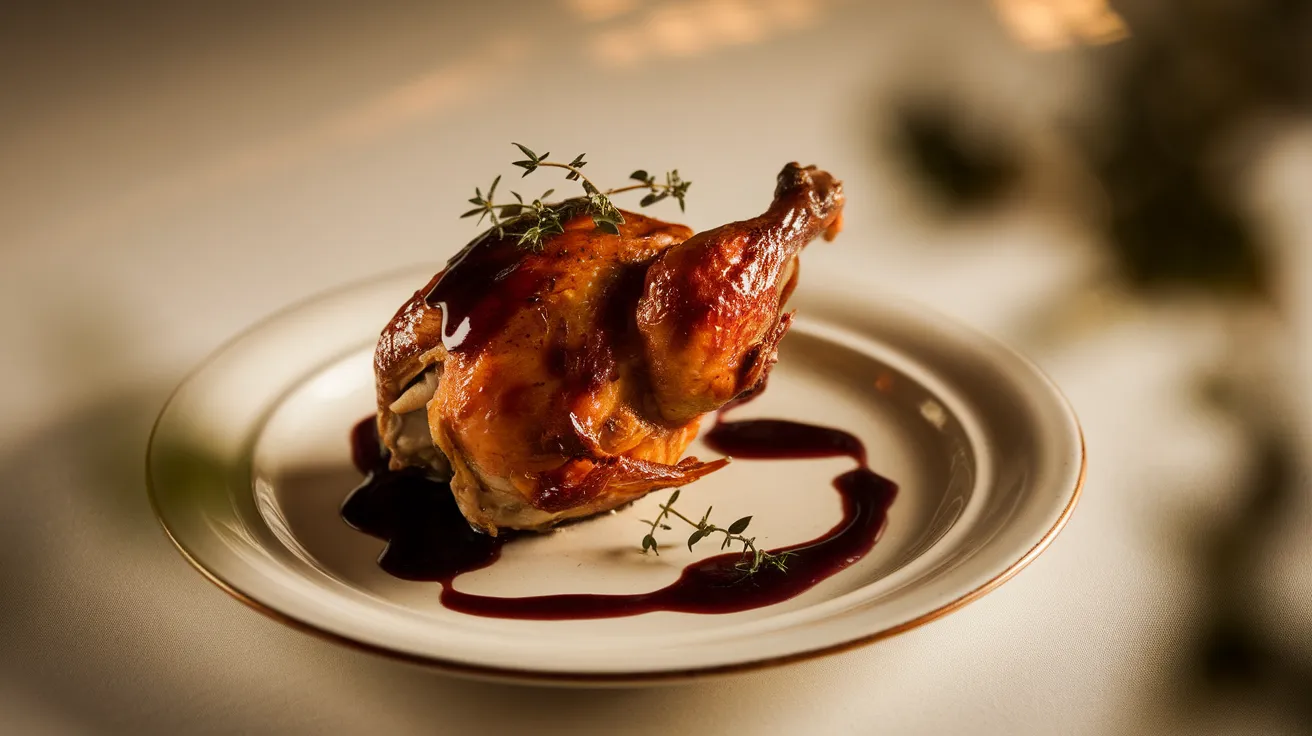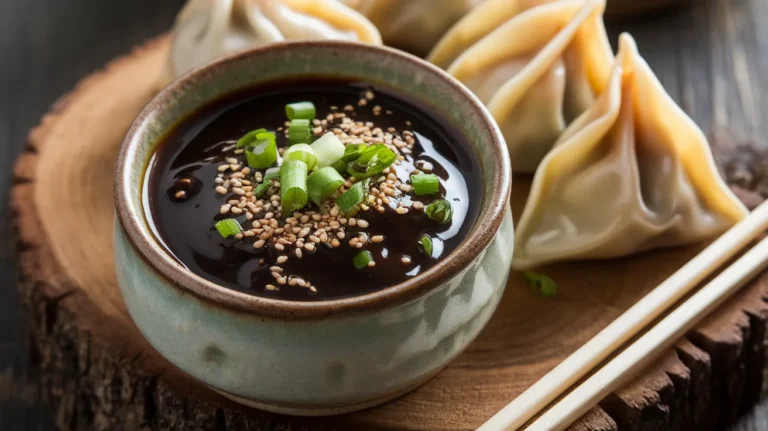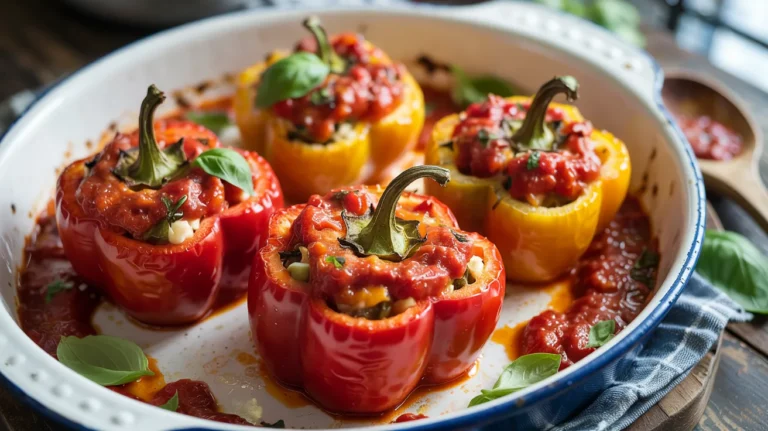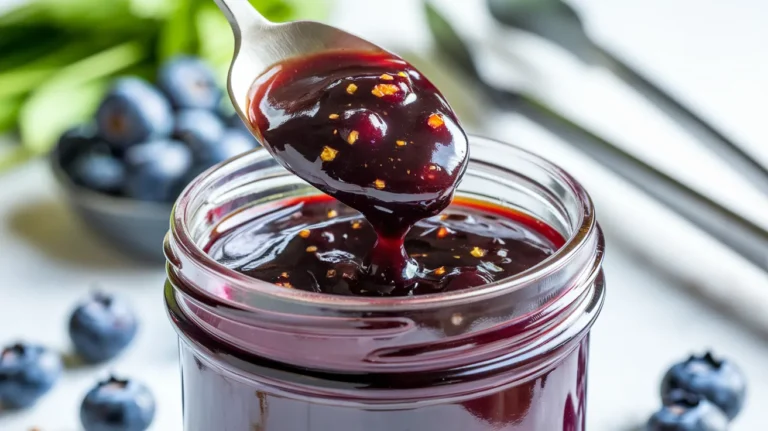This elegant sauce for quail transforms your game bird into a restaurant-quality masterpiece. Our sauce for quail combines red wine, herbs, and aromatics to create a glossy, flavorful accompaniment that enhances the delicate taste of quail without overpowering it. Perfect for special dinners or when you want to impress guests with sophisticated flavors.
SERVES: 4 | PREP: 20 MIN | COOK: 25 MIN | TOTAL: 45 MIN
Ingredients
Base Sauce Components
| Ingredient | Amount | Notes |
|---|---|---|
| Red wine (Pinot Noir preferred) | 1½ cups | Room temperature |
| Chicken stock | 1 cup | Low-sodium preferred |
| Shallots | 3 medium | Finely minced |
| Fresh thyme | 2 tablespoons | Leaves only |
| Bay leaves | 2 whole | Remove before serving |
Enrichment Elements
| Ingredient | Amount | Purpose |
|---|---|---|
| Cold butter | 4 tablespoons | Cut into cubes |
| Heavy cream | 2 tablespoons | Optional richness |
| Fresh garlic | 2 cloves | Minced fine |
| Juniper berries | 4-5 berries | Crushed lightly |
| Salt and black pepper | To taste | Season throughout |
Step-by-Step Instructions
Phase 1: Building the Foundation (8 minutes)
Step 1: Heat a heavy-bottomed saucepan over medium heat. Add 1 tablespoon of oil and let it shimmer. This creates the base for building flavors.
Step 2: Add the minced shallots and cook for 2-3 minutes until translucent. Stir frequently to prevent browning, which would add bitter notes to your sauce.
Step 3: Add minced garlic and crushed juniper berries. Cook for 30 seconds until fragrant. The garlic should sizzle but not brown.
Step 4: Add fresh thyme leaves and bay leaves. Stir for 15 seconds to release the herb oils. Your kitchen should smell amazing at this point.
Phase 2: Wine Reduction (12 minutes)
Step 5: Pour in the red wine carefully to avoid splattering. The mixture will bubble vigorously at first. This is normal and expected.
Step 6: Increase heat to medium-high and bring to a rolling boil. You’ll see rapid bubbles across the surface.
Step 7: Reduce heat to medium and simmer for 8-10 minutes until the wine reduces by half. The liquid should coat the back of a spoon lightly.
Step 8: Stir occasionally and watch for the glossy, syrupy consistency that indicates proper reduction. The alcohol will cook off, leaving concentrated flavors.
Phase 3: Stock Integration (8 minutes)
Step 9: Add the chicken stock slowly while stirring. The mixture will thin initially but will thicken as it reduces.
Step 10: Bring to a gentle simmer and cook for 6-8 minutes until reduced by one-third. The sauce should coat the spoon more thickly now.
Step 11: Taste and adjust seasoning with salt and pepper. Remember that the sauce will concentrate further, so season lightly.
Phase 4: Final Enrichment (3 minutes)
Step 12: Remove from heat and strain through a fine-mesh sieve into a clean saucepan. Press solids gently to extract flavors.
Step 13: Return to low heat and whisk in cold butter cubes one at a time. This creates the glossy, restaurant-quality finish.
Step 14: Add heavy cream if desired for extra richness. Whisk constantly to prevent separation.
Step 15: Final taste and seasoning adjustment. The sauce for quail should be smooth, glossy, and well-balanced.
Chef’s Notes
Wine Selection Matters: Choose a Pinot Noir or Côtes du Rhône that you’d actually drink. The wine’s quality directly impacts your sauce’s final taste.
Temperature Control: Keep the final sauce warm but never boiling after adding butter. High heat will break the emulsion and create a greasy texture.
Make-Ahead Tip: Prepare through step 11 up to 2 days ahead. Reheat gently and add butter just before serving for best results.
Perfect Consistency: Your finished sauce for quail should coat the back of a spoon but still flow smoothly when poured.
Nutrition Information (Per Serving)
- Calories: 95
- Protein: 1g
- Carbohydrates: 4g
- Fat: 7g
- Sodium: 180mg
Delicious Variations
Port Wine Version: Replace red wine with port wine for a sweeter, more luxurious sauce. Reduce the cooking time by 2-3 minutes due to port’s higher sugar content.
Herb-Crusted Style: Add fresh rosemary and sage along with thyme. This variation pairs beautifully with roasted vegetables and complements recipes like our sauce for duck.
Mushroom-Enhanced: Sauté sliced mushrooms before adding wine. Wild mushrooms work exceptionally well with game birds.
Citrus Twist: Add orange zest in the final minute of cooking. This brightens the sauce and cuts through rich flavors, similar to techniques used in our sauce for veal cutlets.
Storage & Reheating
Refrigerator Storage: Store covered for up to 3 days. The sauce will thicken when cold.
Reheating Method: Warm gently in a small saucepan over low heat. Whisk in 1-2 tablespoons of stock if too thick.
Freezing Option: Freeze for up to 1 month before adding butter. Thaw overnight and finish with butter when reheating.
Serving Temperature: Serve warm but not hot. The ideal temperature is 140-150°F.
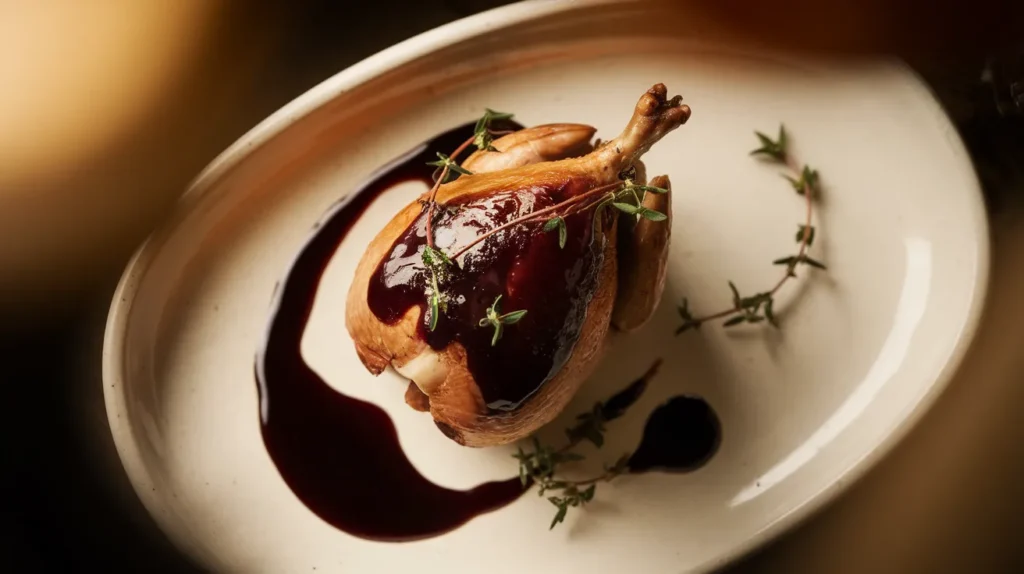
Troubleshooting Guide
Problem: Sauce is too thin Solution: Return to heat and simmer uncovered for 2-3 minutes until it reaches proper consistency. Whisk in 1 tablespoon of cold butter for thickening.
Problem: Sauce tastes too acidic Solution: Add 1 teaspoon of honey or 1 tablespoon of cream to balance the acidity. Taste and adjust gradually.
Problem: Butter breaks and looks greasy Solution: Remove from heat immediately. Whisk in 1 tablespoon of cold stock to re-emulsify, then continue with remaining butter off heat.
Problem: Sauce is too salty Solution: Add 2 tablespoons of unsalted stock and 1 teaspoon of cream. Simmer briefly to incorporate and balance flavors.
Problem: Lumpy texture after straining Solution: Pass through an even finer sieve or use an immersion blender for 10 seconds to smooth out any lumps.
Equipment Essentials
- Heavy-bottomed saucepan (2-quart capacity)
- Fine-mesh strainer
- Wooden spoon for stirring
- Whisk for emulsification
- Sharp knife for mincing
- Cutting board
- Measuring cups and spoons
Shopping List
Produce Section
- 3 medium shallots
- 2 garlic cloves
- Fresh thyme (small package)
Pantry/Spice Aisle
- Bay leaves
- Juniper berries (spice shop or online)
- Salt and black pepper
Wine/Beverage Section
- 1 bottle Pinot Noir (you’ll use 1½ cups)
Dairy Section
- Butter (unsalted preferred)
- Heavy cream
Meat/Deli Counter
- Low-sodium chicken stock
Success Secrets
1. Quality Ingredients: Use wine you’d drink and fresh herbs whenever possible. These foundational flavors make the difference between good and exceptional sauce.
2. Patience with Reduction: Don’t rush the wine reduction process. Proper reduction concentrates flavors and removes harsh alcohol notes that would overpower the delicate quail.
3. Butter Temperature: Always use cold butter straight from the refrigerator. Room temperature butter won’t create the proper emulsion for that glossy finish.
4. Strain Thoroughly: A smooth sauce for quail elevates the entire dish. Take time to strain properly and press the solids gently for maximum flavor extraction.
5. Timing is Everything: Have your quail ready before finishing the sauce. The final butter enrichment should happen just before serving for optimal texture and temperature.
This sauce for quail recipe creates the perfect accompaniment for your special dinner. The rich, wine-forward flavors complement the delicate game bird without overwhelming its natural taste. Serve immediately over your perfectly cooked quail for a restaurant-quality experience at home.
